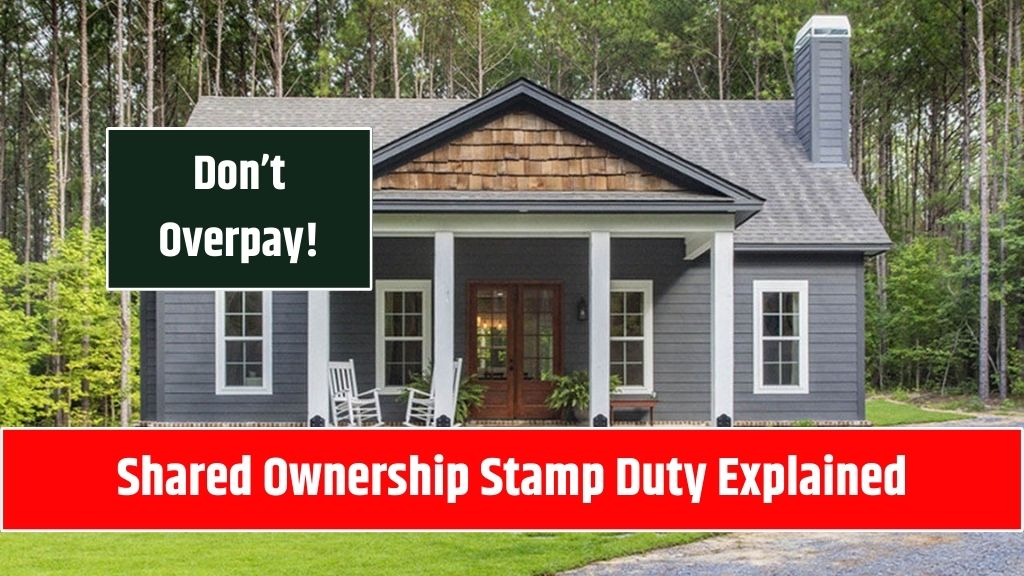Buying a home through a shared ownership scheme can be a more affordable way to get on the property ladder. However, understanding how Stamp Duty Land Tax (SDLT) applies to these properties can be confusing. This guide explains how SDLT works when buying a shared ownership property, including how to pay it, available reliefs, and how payments change if you increase your ownership share.
What Is Shared Ownership and When Does SDLT Apply?
Shared ownership schemes allow you to buy a share of a property while paying rent on the remaining portion. These schemes are typically run by approved public bodies like:
- Local housing authorities
- Housing associations
- Housing action trusts
- The Northern Ireland Housing Executive
- Development corporations
SDLT applies when the property’s value or the lease premium exceeds the SDLT thresholds for residential properties.
Key SDLT Thresholds (Until 31 March 2025):
- £250,000 for residential properties.
- £425,000 for first-time buyers (if the property value is £625,000 or less).
Use the HMRC SDLT calculator to estimate your SDLT.
How Can You Pay SDLT on Shared Ownership Properties?
When buying through a shared ownership scheme, you have two options:
Market Value Election (One-Off Payment)
You pay SDLT upfront based on the full market value of the property—even if you’re only purchasing a small share.
Benefits:
- No further SDLT due if you increase your ownership later.
- Simpler process with a one-time payment.
Drawback:
- You might pay more initially compared to paying in stages.
Market Value Election Example:
Priya buys a 50% share of a flat with a market value of £280,000. She pays £140,000 for her share.
SDLT Calculation:
- 0% on the first £250,000 (of the full market value) = £0
- 5% on the remaining £30,000 (£280,000 – £250,000) = £1,500
Total SDLT: £1,500
Paying SDLT in Stages
You pay SDLT based on the value of the initial share you buy. If you increase your share later, you may owe additional SDLT—but only after your ownership exceeds 80%.
How It Works:
- Initial SDLT: Based on the lease premium (the amount you pay for your share).
- Additional SDLT: Applies only when you exceed 80% ownership.
Stage Payment Example:
Amit buys a 50% share of a house with a market value of £300,000. He pays £150,000 for his share.
SDLT Calculation:
- Threshold: £250,000 for residential properties.
- £150,000 is below the threshold, so no SDLT is due initially.
However, Amit must still file an SDLT return with HMRC.
SDLT Relief for First-Time Buyers
First-time buyers purchasing a property through a shared ownership scheme may qualify for first-time buyer relief.
Relief Details:
- No SDLT on the first £425,000 of the property’s market value (until March 2025).
- 5% SDLT on any amount between £425,001 and £625,000.
- No relief available if the property’s market value exceeds £625,000.
Example:
Sana buys a 50% share of a property with a market value of £500,000.
SDLT Calculation with Relief:
- 0% on the first £425,000 = £0
- 5% on the remaining £75,000 = £3,750
Total SDLT: £3,750
Buying More Shares and SDLT Implications
When you buy additional shares, SDLT applies only if:
- Your ownership share exceeds 80%.
- You purchase more shares after crossing the 80% threshold.
How SDLT Is Calculated:
- SDLT is based on the total amount you’ve paid so far for the property.
- Use the residential SDLT rates applicable at the time of the latest share purchase.
Example: Increasing Your Ownership
You initially paid £260,000 for your shares. Now you buy an additional share for £65,000, pushing your total ownership above 80%.
Step 1: Calculate SDLT on Total Payments to Date
- 0% on the first £250,000 = £0
- 5% on the remaining £10,000 (since £260,000 – £250,000 = £10,000) = £500
Step 2: Calculate SDLT for the New Share
- Share value: £65,000
- Divide £65,000 by £260,000 = 0.25
- Multiply 0.25 × £500 = £125
SDLT Due: £125
SDLT on Linked Transactions
HMRC might treat your individual share purchases as linked transactions if:
- Your total ownership exceeds 80%.
- The purchases are connected or planned as part of a larger transaction.
Implication:
- SDLT is recalculated based on the total consideration paid across all linked purchases.
Key SDLT Deadlines for Shared Ownership
- 14 days to file your SDLT return after property completion.
- Late filing can lead to:
- £100 fine if late by up to 3 months.
- £200 fine if later than 3 months.
- Interest on overdue payments.
Understanding SDLT rules for shared ownership properties can help you choose the best payment method and avoid unexpected costs. First-time buyers can benefit from reliefs, while those planning to staircase beyond 80% should prepare for potential additional tax.
FAQ’s
What is SDLT for shared ownership properties?
SDLT is a tax you may pay when buying a home through a shared ownership scheme, depending on the property’s value and your payment method.
What are the SDLT payment options for shared ownership?
You can either pay SDLT upfront based on the property’s full market value or in stages as you buy more shares.
How does SDLT apply when I buy more shares?
You’ll only pay SDLT when your ownership share exceeds 80%, calculated based on total payments made so far.
Do first-time buyers get SDLT relief in shared ownership?
Yes. First-time buyers pay no SDLT on the first £425,000 of a property worth up to £625,000.
What happens if I don’t file an SDLT return?
Late SDLT returns can result in fines of £100 (up to 3 months late) or £200 (over 3 months), plus interest on unpaid tax.
